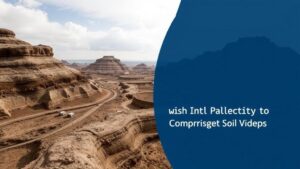Exploring Ancient Pictograph Sites for Nearby Artifact Deposits
Exploring Ancient Pictograph Sites for Nearby Artifact Deposits
The study of ancient pictographs, often found in remote locations, provides significant insights into the social and cultural practices of prehistoric peoples. These pictographs, or rock paintings, serve not only as artistic expressions but also as markers for nearby artifact deposits. In this article, we will explore how these pictographs can be utilized to locate artifact sites, dive into methodologies for research, and discuss real-world applications and case studies.
Understanding Pictographs and Their Importance
Pictographs are images painted on rock surfaces and are significant facets of many indigenous cultures across the globe. are more than mere art; they narrate the experiences, beliefs, and traditions of the people who created them. For example, the famous rock art of the Ancestral Puebloans in the American Southwest illustrates their connection to cosmology, nature, and daily life.
Also, these pictographs can often serve as indicators of human activity in surrounding areas. Archaeologists argue that where communities created visual narratives, they also likely lived, gathered, and discarded material culture, making pictograph sites prime locations for archaeological excavation.
Methodologies for Location and Exploration
To systematically explore ancient pictograph sites for artifact deposits, researchers employ a variety of methodologies, merging traditional archaeology with modern technology. following approaches are commonly used:
- Field Surveys: Archaeologists often conduct extensive field surveys around known pictograph sites, documenting anything from pottery shards to lithic tools.
- Remote Sensing: Technologies such as LIDAR (Light Detection and Ranging) allow for the examination of landscapes without physical disturbance, revealing potential artifact layers buried beneath the surface.
- Geophysical Surveying: Techniques like magnetic and ground-penetrating radar provide data about subsurface features that may signify artifact deposits.
Combining these methods enables a comprehensive understanding of the relationship between pictographs and the material culture in the area. For example, a survey in the Chaco Canyon area has revealed correlations between pictographs and artifact density, suggesting that both are influenced by the same cultural practices.
Case Studies: Pictographs and Artifact Correlation
Several case studies illustrate the efficacy of using pictographs to locate nearby artifacts. One notable example is the work conducted in the Great Basin of the United States. Archaeologists found that certain pictographs depicting hunting scenes corresponded with high concentrations of projectile points and animal bone fragments in the vicinity, indicating that these sites were likely used for hunting and gathering activities.
Another compelling case is found in Australia, where Aboriginal rock art has been studied not only for its aesthetic value but as a guide to local food sources and seasonal activities. Here, the presence of specific imagery correlates with the presence of ancient food storage sites and tools, thereby broadening our understanding of the resource management practices of Aboriginal peoples.
Challenges and Considerations
While exploring pictographs and related artifacts presents exciting opportunities for discovery, several challenges must be considered:
- Site Preservation: Pictograph sites are often vulnerable to weathering and vandalism. Researchers must tread carefully to preserve the integrity of these cultural treasures.
- Cultural Sensitivity: Many such sites are of significant cultural importance to indigenous communities, necessitating respectful engagement and, where appropriate, collaboration with local tribes.
- Interpretive Bias: It is crucial to avoid projecting modern-day interpretations onto ancient art and to consider the broader socio-political contexts in which these pictographs were created.
Actionable Takeaways
Exploring ancient pictograph sites for nearby artifact deposits is not only a rich field of study for historians and archaeologists but also an avenue for understanding ancient human behavior. Here are several actionable takeaways:
- Consider engaging in field surveys around known pictograph sites to look for material culture evidence.
- Use modern technologies such as GIS (Geographic Information Systems) and remote sensing for data collection and analysis.
- Develop relationships with indigenous communities to ensure respectful and responsible research practices.
To wrap up, the interplay between pictographs and artifact deposits offers a unique perspective into the lives of ancient peoples. Through careful exploration and innovative methodologies, researchers can continue to uncover the stories and meanings embedded in these remarkable cultural remnants.

